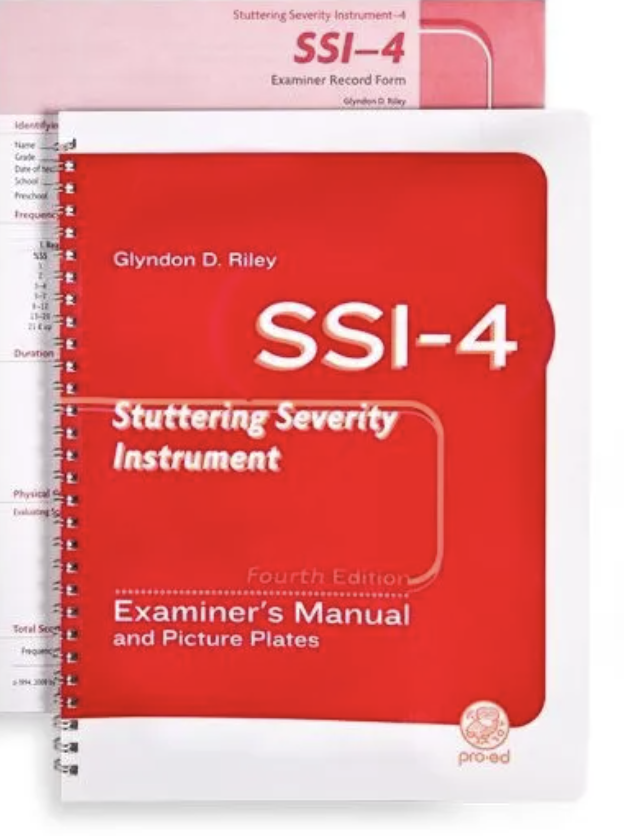Giving the Stuttering Severity Instrument- 4th Edition (SSI-4)
The Stuttering Severity Instrument- 4th Edition (SSI-4) is a norm-referenced tool that is administered to measure stuttering severity in spontaneous speech and reading. It can be used with preschool-aged children through adulthood.

It’s a great companion to the Overall Assessment of the Speaker’s Experience of Stuttering (OASES), which measures a client’s perceptions of observable stuttering behaviors, reactions to stuttering, and difficulties in performing daily tasks involving communication. I have created report templates for both fluency evaluations that you can view here.
SSI-4 Areas of Assessment
The SSI-4 measures speaking fluency in the following areas:
- Frequency: Evaluates the percentage of syllables stuttered in a speech sample
- Duration: Evaluates the average length of 3 longest stuttering events rounded to the nearest .1 second
- Physical Concomitants: Evaluates physical behaviors, or secondary characteristics, observed during moments of disfluency. The 4 types of physical concomitants are:
1. distracting sounds (e.g., noisy breathing, whistling, blowing)
2. facial grimaces (e.g., jaw jerking, lip pressing, jaw tensing)
3. head movements (e.g., turning away, poor eye contact, constant eye movement)
4. movements of extremities (e.g., arm and hand movement, torso movement, foot tapping) - Naturalness of Speech: Evaluates the degree speaker sounds ‘typical’ compared to speakers of the same age and gender during a conversation
Scoring the SSI-4
The evaluator obtains several speech samples and counts the number of syllables stuttered out of 100 syllables spoken. Depending on the client’s age, the samples can be obtained through reading tasks, spontaneous speech tasks, or picture descriptions. Scores are given to each of the areas assessed and then transferred to a total score, which correlates to a rating of very mild, mild, moderate, severe, or very severe.

Mild Rating
In mild cases, disfluencies may have a relatively limited impact on a client’s life. They may experience occasional disruptions in their fluency while speaking, such as repetitions, prolongations, or blocks, but these occurrences may not significantly affect their overall communication.
Moderate Rating
In moderate cases, stuttering can have a more noticeable impact on a client’s life. They may experience frequent disruptions in their speech, including repetitions, prolongations, and blocks, leading to difficulties in expressing themselves freely.
Severe Rating
In severe cases, disfluencies may be frequent, prolonged, and intense, making it difficult to express themselves or communicate effectively. Individuals with severe stuttering may experience significant anxiety, shame, and social isolation due to their disfluency.
It’s important to note that a client’s stuttering behaviors and perception of the impact of stuttering may vary but both should be addressed in sessions.
For more info on report writing, check out these resources- ⬇️
Blog post: Write a Great Speech and Language Report
FREE course: Write Speech and Language Reports Like a Boss
